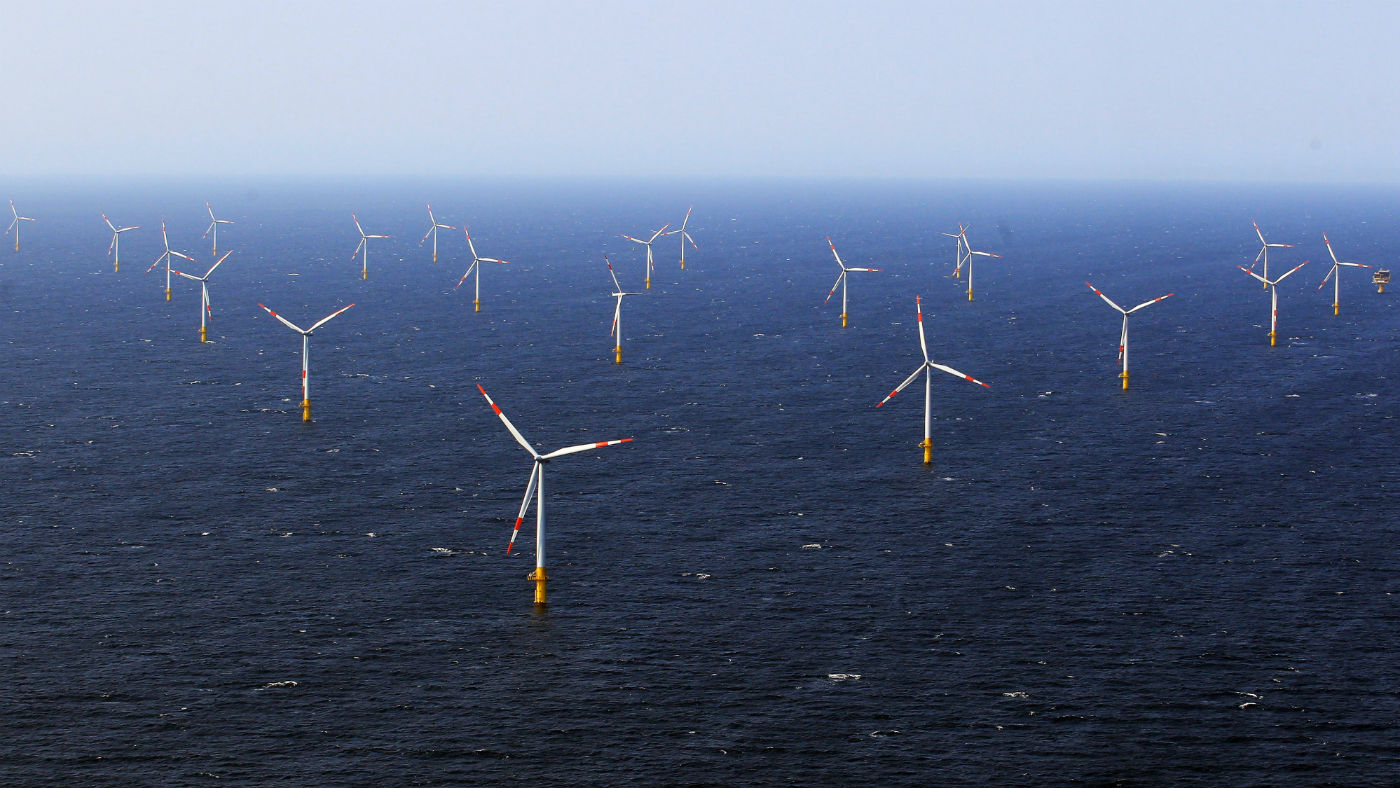Could the whole world one day be powered by a single deep-sea wind farm?
Scientists claim a North Atlantic turbine field the size of India could supply the world’s energy needs - but will it ever happen?

A major new study, published in the journal Proceedings of the National Academy of Sciences, has claimed that all of Earth’s energy needs could be met by a single massive deep-sea wind farm stretching across the Atlantic.
How massive?
Co-authors Anna Possner and Ken Caldeira, from the Carnegie Institution for Science at Stanford University, in California, have calculated that a wind farm covering about three million square km (1.2 million square miles) of ocean - roughly the size of India - could theoretically be used to generate “civilisation scale power”, or 18 terawatts, humanity’s entire current energy needs.
The Week
Escape your echo chamber. Get the facts behind the news, plus analysis from multiple perspectives.

Sign up for The Week's Free Newsletters
From our morning news briefing to a weekly Good News Newsletter, get the best of The Week delivered directly to your inbox.
From our morning news briefing to a weekly Good News Newsletter, get the best of The Week delivered directly to your inbox.
Why the ocean?
The duo claim that wind speeds are, on average, 70% higher over the planet’s oceans than they are on land. According to Science magazine, this means wind turbines floating out at sea could create up to three times as much electricity as their equivalent number on land.
The difference is down to the phenomenon known as “wind shadow”. According to The Independent, this means that, on land, “as more turbines are added to a wind farm, the combined drag from their turning blades effectively places a cap on the amount of energy from available moving air that can be converted to electricity”.
However, new simulations show that in the North Atlantic, this limit would be significantly higher, making it possible to generate more than six watts per square metre (sq/m), compared with just 1.5 watt sq/m on solid ground.
A free daily email with the biggest news stories of the day – and the best features from TheWeek.com
That's down to the fact that the North Atlantic taps into a huge reservoir of energy created by heat pouring into the atmosphere from the ocean surface. Even in winter, when output would drop to a fifth of the summer average, it would create enough energy to power every country in the EU, including the UK.
Isn’t it a logistical nightmare?
“There are likely to be very significant hurdles to building such a major project, especially one that would require international cooperation and incredible levels of investment,” says The Independent.
Cost appears to be a major prohibiting factor. As energy specialist Professor Gordon Hughes recently explained, in an article in the Financial Times, the capital cost of offshore wind farms is actually rising.
Another is technology. In areas such as the North Atlantic, sea levels are often well over a mile deep, meaning the only viable option would be to have floating turbines anchored to the sea floor that would also have to be strong enough to withstand wave heights frequently exceeding 10ft.
There is also the question of how energy would be captured and transferred from the mid-Atlantic around the world, given that we don't yet have the technology to do so.
So will it ever happen?
Charlie Zender, a physicist at the University of California, Irvine, told Science magazine that the report's “relevance to energy policy is low”, since we are still decades away from being able to build wind farms at sea at the density envisioned.
“It’s very unlikely that we would ever build out open ocean turbines on anything like that scale,” agrees The Washington Post. “Indeed, doing so could even alter the planet’s climate.”
However, according to the study report, a key message to come out of the research “is that wind energy over the open oceans has large potential — reinforcing the idea that floating wind farms, over very deep waters, could be the next major step for wind energy technology”.
-
 How Bulgaria’s government fell amid mass protests
How Bulgaria’s government fell amid mass protestsThe Explainer The country’s prime minister resigned as part of the fallout
-
 Femicide: Italy’s newest crime
Femicide: Italy’s newest crimeThe Explainer Landmark law to criminalise murder of a woman as an ‘act of hatred’ or ‘subjugation’ but critics say Italy is still deeply patriarchal
-
 Brazil’s Bolsonaro behind bars after appeals run out
Brazil’s Bolsonaro behind bars after appeals run outSpeed Read He will serve 27 years in prison
-
 Americans traveling abroad face renewed criticism in the Trump era
Americans traveling abroad face renewed criticism in the Trump eraThe Explainer Some of Trump’s behavior has Americans being questioned
-
 Nigeria confused by Trump invasion threat
Nigeria confused by Trump invasion threatSpeed Read Trump has claimed the country is persecuting Christians
-
 Sanae Takaichi: Japan’s Iron Lady set to be the country’s first woman prime minister
Sanae Takaichi: Japan’s Iron Lady set to be the country’s first woman prime ministerIn the Spotlight Takaichi is a member of Japan’s conservative, nationalist Liberal Democratic Party
-
 Russia is ‘helping China’ prepare for an invasion of Taiwan
Russia is ‘helping China’ prepare for an invasion of TaiwanIn the Spotlight Russia is reportedly allowing China access to military training
-
 Interpol arrests hundreds in Africa-wide sextortion crackdown
Interpol arrests hundreds in Africa-wide sextortion crackdownIN THE SPOTLIGHT A series of stings disrupts major cybercrime operations as law enforcement estimates millions in losses from schemes designed to prey on lonely users


